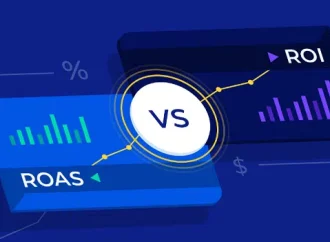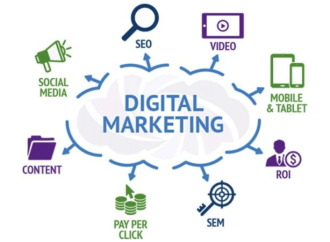Are you tired of the constant struggle to find sustainable and reliable sources for technology? Have you ever thought about where those minerals in your smartphone or laptop come from? The answer lies in critical minerals, which are essential components in high-tech products. The US and EU have recently joined forces to break barriers and
Are you tired of the constant struggle to find sustainable and reliable sources for technology? Have you ever thought about where those minerals in your smartphone or laptop come from? The answer lies in critical minerals, which are essential components in high-tech products. The US and EU have recently joined forces to break barriers and pave the way towards more sustainable technology. In this blog post, we will discuss how these talks on critical minerals can benefit us all while promoting a greener future. Get ready to discover a world of possibilities!
What are critical minerals?
Critical minerals are materials that are essential for the operation of a wide range of technologies, including renewable energy, defense, and other high-tech applications. They are often used in very small quantities and are not easily replaced by other materials.
The United States and European Union have been working together to improve the security of supply of critical minerals, including through the development of an international minerals observatory. This cooperation was given a boost in 2019 when the United States signed a Memorandum of Understanding with the European Commission on Critical Minerals Cooperation.
The United States Geological Survey defines a critical mineral as “a mineral commodity whose continued supply is essential to maintaining or improving our economic welfare and/or national security.” The USGS lists 30 minerals as being critical to the United States, including rare earth elements, manganese, titanium, zirconium, and tellurium.
Why the US and EU need to cooperate on critical minerals
There is a growing need for critical minerals in the United States and European Union as we move towards more sustainable technology. These minerals are essential for the production of electric vehicles, solar panels, and wind turbines, among other things. The US and EU have been working together to secure a stable supply of these minerals, and this cooperation is important for ensuring that we can continue to move forward with our transition to clean energy.
The US and EU are both large consumers of critical minerals, and we need to work together to ensure that there is a stable supply of these materials. We have already seen shortages of some minerals, such as cobalt, which has caused prices to spike. By cooperating on critical minerals, we can avoid these shortages and ensure that there is a steady supply of these materials for our industries.
In addition to ensuring a stable supply of critical minerals, cooperation between the US and EU can also help to reduce environmental impact. Many of these minerals are mined in conflict zones or areas with poor environmental regulations. By working together, we can apply pressure to these mining operations to improve their practices and reduce their impact on the environment.
The US and EU need to cooperate on critical minerals because it is essential for our transition to clean energy. This cooperation will help us to avoid shortages and ensure that there is a steady supply of these materials for our industries. In addition, it will also help us to reduce the environmental impact of mining operations
What are the benefits of a US-EU trade deal on critical minerals?
There are many potential benefits of a US-EU trade deal on critical minerals. For one, it could help to ensure a more secure and sustainable supply of these minerals for the future. It could also lead to increased cooperation between the two regions on critical mineral research and development, as well as help to boost the competitiveness of EU companies in the global market.
A trade deal could also help to address some of the issues that have arisen in recent years regarding the sourcing of critical minerals. For instance, it could help to establish a more level playing field for companies that source minerals from conflict-affected and high-risk areas. In addition, a trade deal could provide greater transparency around the pricing and trading of critical minerals, which would benefit both consumers and producers.
Ultimately, a US-EU trade deal on critical minerals has the potential to create a number of positive outcomes for both regions. By promoting cooperation and increasing transparency, it could help to create a more sustainable and secure supply of these vital resources.
How will this affect the global market for critical minerals?
The EU is the world’s largest market for critical minerals, accounting for more than half of global demand. The US is a major producer of critical minerals, but has been increasingly reliant on imports in recent years.
The EU is working to increase its supply of critical minerals through domestic production and responsible sourcing practices. The US is also working to increase its domestic production of critical minerals.
The two sides are working together to break down barriers to trade in critical minerals. This will help ensure a stable and sustainable supply of critical minerals for both the EU and the US, and will help support the transition to a low-carbon economy.
What challenges need to be addressed before a US-EU trade deal on critical minerals can be reached?
There are a number of challenges that need to be addressed before a US-EU trade deal on critical minerals can be reached. Firstly, the EU and US have different approaches to the regulation of critical minerals. The EU has a more stringent approach, which includes the imposition of quotas and export controls on certain minerals. The US has a less restrictive approach, which relies on voluntary industry initiatives. Secondly, there is a lack of transparency around the pricing and availability of critical minerals. This makes it difficult for companies to plan their procurement strategies and makes it hard to compare prices between different suppliers. Thirdly, there is a need for greater cooperation between the EU and US on research and development into new technologies that can reduce dependence on critical minerals. Finally, there is a need to address the issue of environmental sustainability in relation to mining and processing of critical minerals.
Conclusion
This article has highlighted the important talks taking place between the US and EU to ensure that we have access to critical minerals for sustainable technology. It is encouraging to see both sides actively engaged in discussions that could result in mutually beneficial agreements, as well as a healthier environment for future generations. As negotiations continue, it is essential that all parties strive towards a common goal of balancing economic security with environmental sustainability. If successful, this effort could be an example of how international cooperation can break barriers and pave the way forward on key global issues.





















Leave a Comment
Your email address will not be published. Required fields are marked with *